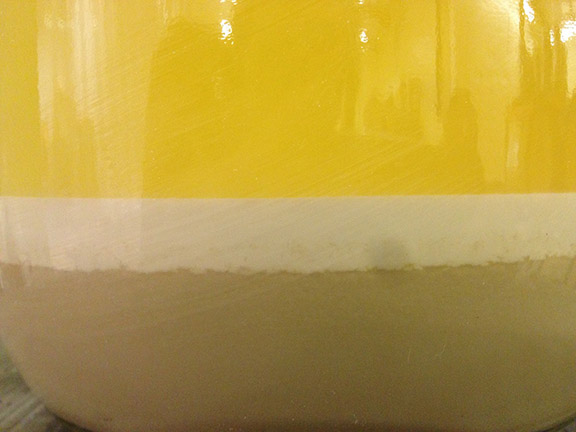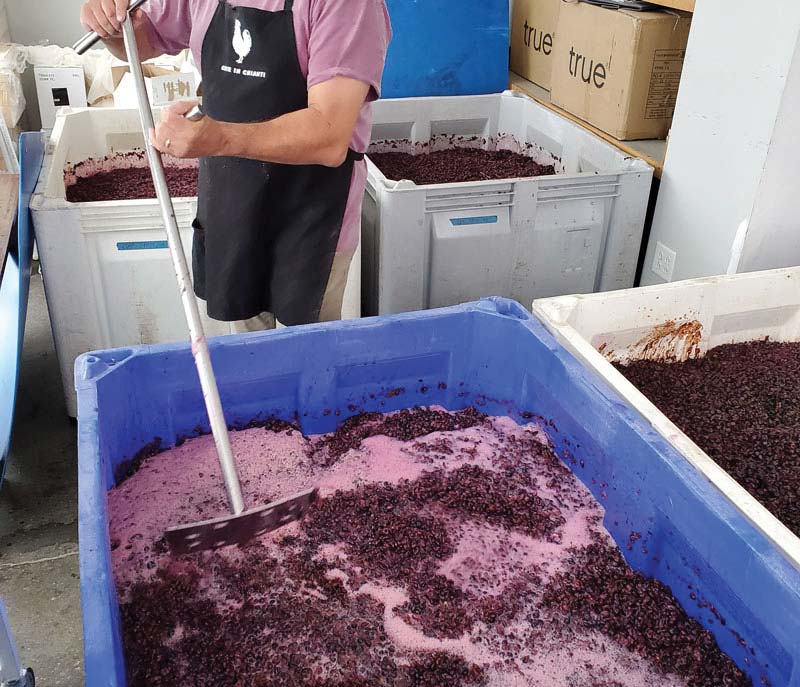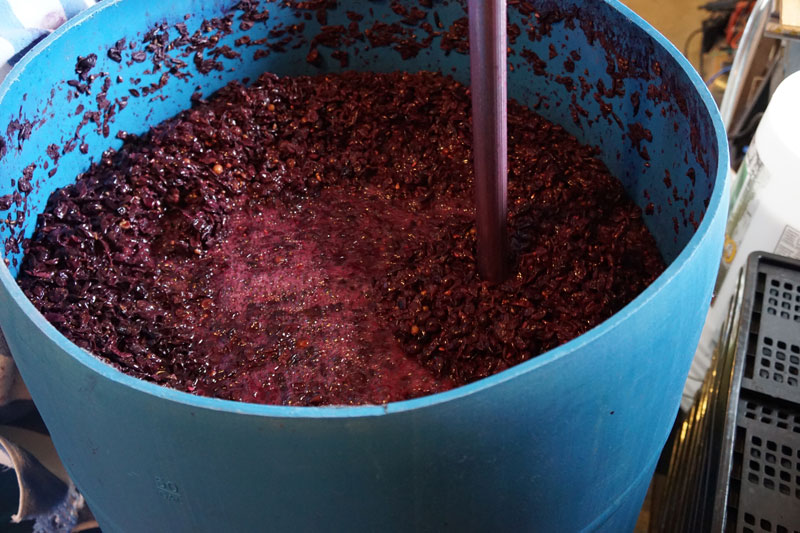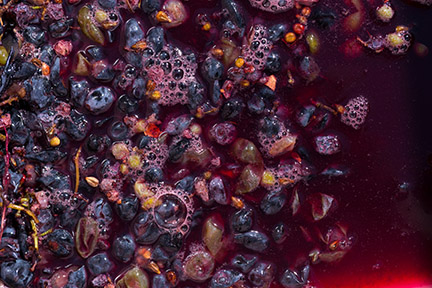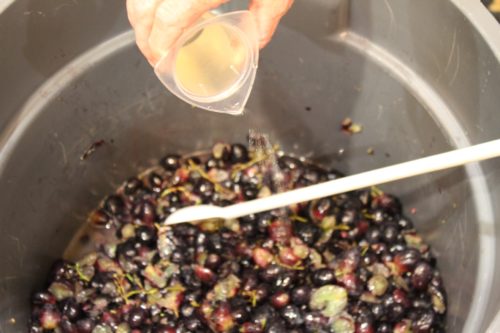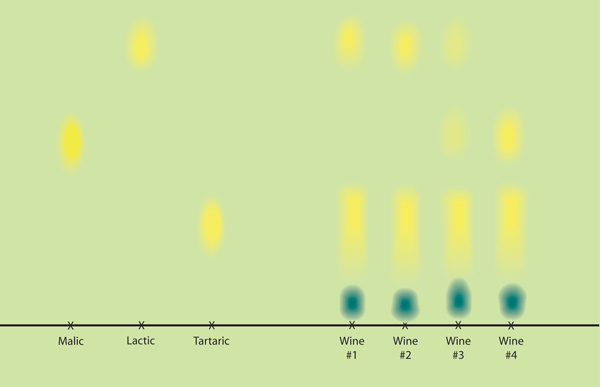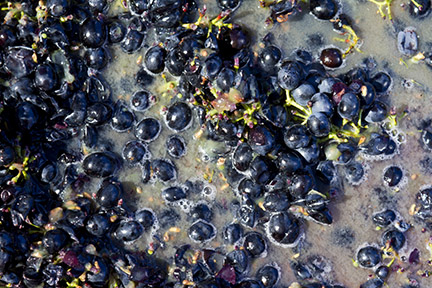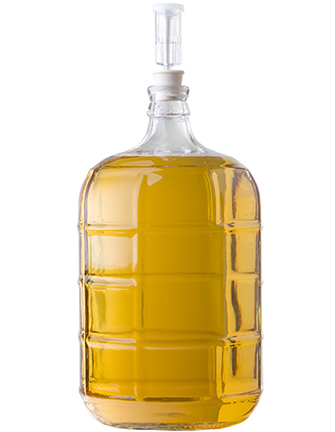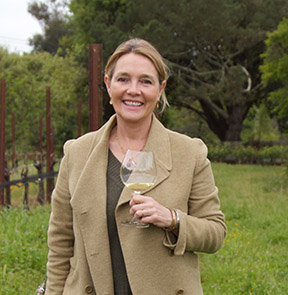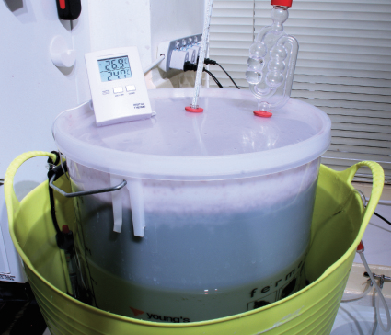Topic: Yeast & Fermentation
Campden Tablets Best Practices
The great thing about Campden tablets (a convenient form of dosing in sulfur dioxide for home winemakers) is that they will inhibit the yeast and bacteria you do not want (which are
Lees, Sur Lie Aging, and Bâttonage
Learn about the lees that we find in wine and how we can use them to our advantage.
A Nitro Boost: Nitrogen’s role in primary fermentation
Wine was made for millennia with little intervention from humans. But let’s be honest, we have no idea how those wines tasted. Today we know that yeast create the wine and keeping them happy is crucial for producing good wine. Learn how nitrogen plays a pivotal role.
Troubleshooting Malolactic Fermentation
Well, it’s tough to say what would make one cloudy and the other clear, except for the fact that they may not have been identical coming from your fermenters. If you did
Non-Conventional Yeast: Tailor-made solutions for new challenges
Many of us in winemaking were trained to trust Saccharomyces yeast and not leave our wines to chance with wild strains. But winds of change are in the air and yeast companies are now turning to many non-Saccharomyces yeasts for certain purposes.
Finding a Vinegar Storage Space
You got a chuckle out of me. Indeed, how dare you introduce vinegar to your wines! I’m actually very happy that you’re writing so you can learn how not to introduce vinegar
Judging Fermentation Completion
It certainly sounds like you are getting into the dryness zone. Specific gravity is the ratio of the density of a liquid in relation to the density of water, calibrated at a
Effects Of Using Killer Yeast In My Winery?
I’m glad that you are attuned to your yeast and realize that some strains are “killer factor positive” and one is “sensitive.” I really wish that the yeast industry had come up
The Alcohols
Ethanol may be the most prominent and well-known alcohol in wine, but it is not the only one to play a large role in a wine’s character. Learn about the various alcohols in wine.
Maceration Enzymes: Making the most of these additions
There are a lot of enzyme products available to winemakers, but in general they can be broken into just a few classes. Learn when and why a winemaker might use some of these various enzymes, especially during maceration.
Achieving Cold Stable Wines
For those readers who are not familiar with the article referenced, I talk about how it was likely a reader’s malolactic fermentation would pick back up again when the weather warmed up
The ABC’s of MLF
If you make your own wine, no matter what kind, the concept of malolactic fermentation (MLF) should be well embedded in your mind. Learn some of the basics of MLF.
Properly Measuring Wine Cap Temperature
That is a great question and I’m really glad you asked. Sometimes when those of us who have been making wines for quite some time write about some technique, process, or concept
Trying to Work With Grape Juice That is Amiss
Well, your grape or juice source really put you in a bind. Those are some of the most unbalanced initial numbers I’ve ever seen, and I would seriously consider getting your juice
Adding Sorbate After MLF
Winemakers typically add sorbate (aka sorbic acid, often purchased as potassium sorbate) when they want to bottle a wine with a little residual sugar. It is often added right before backsweetening and
Curing A Stuck Fermentation
Yes, sluggish and stuck fermentations are one of the most common, persistent, and frustrating issues that winemakers encounter. They happen for so many reasons, and possibly for a combination of so many
Red Fermentation Decisions: Tips from the Pros
They say winemaking is part science, part art. That expression may ring most true when it comes to fermenting red wines. While there have been numerous studies and much research regarding the
Red Wine Fermentation Considerations
When I was assigned the story detailing the decisions that come up during red wine fermentations, I began to block out the options and decision trees that occur before, during, and after
White Wine Fermentation Decisions
Whether it is choosing a yeast strain, halting fermentation with a little residual sugar, putting a wine through malolactic fermentation, or a myriad of other options, there is a lot to consider when fermenting white wines.
Benefit From a Cold Soak: Tips From the Pros
The benefits of cold soaking are debated among winemakers, but those who subscribe to the technique of keeping (usually red) grapes cool for a few days prior to fermentation swear by it.
Wine Yeast to Make Bread
You can definitely use wine yeast for baking bread. Bread yeast and wine yeast are both Saccharomyces cerevisiae and both work the same way, by eating sugar and converting it into ethanol
The Importance of Temperature Control in Winemaking
Not properly controlling the temperature of your grapes, must, juice, or wine can have lasting impacts. Learn when and how to take control.
Crazy pH Shift
I applaud you for trying fresh winegrapes in your home winemaking, you’re lucky that you are (relatively) close to a fine winegrape growing area like the Santa Ynez Valley. I grew up
Cucumber Wine
Well, according to specific gravity, your cucumber wine (sounds refreshing) is dry. For RS-dry (residual sugar dry) you want to look for an SG of 0.992 and 0.996 on your hydrometer. If
What Could Lead To A Stalled MLF
Malolactic fermentations tend to stall, or not catch on at all, due to these seven most common factors: High alcohol: Over 14.5% and most strains will go through slowly. Over 15.5% and
